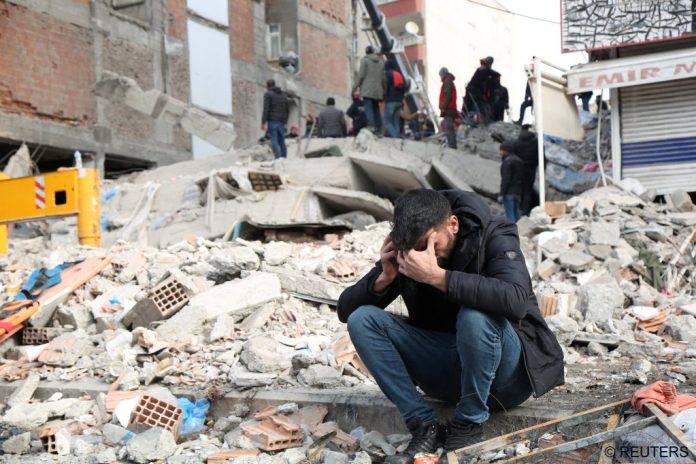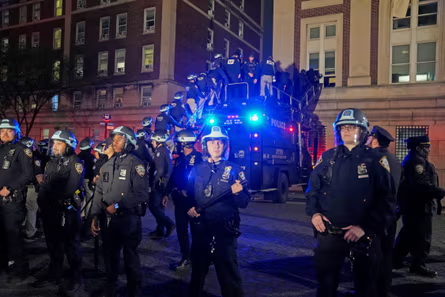There is much sympathy in Iran for earthquake victims in Turkey and Syria, but the disaster has also stoked fears. Iranian authorities seem to have learned little from similar past catastrophes in their country.
Reports on the devastating earthquakes in Syria and Turkey have shocked many in Iran. Turkey is one of the few countries in the world that allows Iranian nationals to visit without a visa, and around half a million Iranians reside there permanently. There is a lot of compassion felt for the victims.
People in Iran know all too well what earthquake catastrophes are like. The country, like Turkey, sits at the intesection of a number of major tectonic plates, making it one of the countries most at risk from earthquakes. And fear there is mounting, with experts warning in Iranian state media of the potential impact of a future disaster of this kind. Among other things, they have speculated about apocalyptic scenes in the densely built capital city of Tehran, a city with more than 15 million inhabitants that is situated above several fault lines.
Corruption and a lack of information
Experts regret that not enough has been learned from the earthquakes of the past and that the relevant construction regulations are often not properly enforced.
“In Iran, as in Turkey, there are very modern and advanced earthquake safety regulations — at least on paper,” Hamid Sadegh-Azar, a professor of structural analysis and dynamics at the University of Kaiserslautern in southwestern Germany, told DW in a written statement.
“The biggest problem is usually that seismic codes are not adhered to. To ensure that a building is earthquake-proof, close attention must be paid to tiny details during the planning and building phases, so that they can be correctly implemented. Most construction work in Iran is carried out by unqualified workers. It’s very unlikely that earthquake-proof buildings will be constructed if building code inspectors are negligent, incompetent or corrupt.”
Several building contractors in Turkey who were allegedly responsible for some of the buildings destroyed in the recent earthquakes have been arrested. According to the Turkish news agency DHA, one contractor, who was said to have been behind numerous buildings that collapsed in Adiyaman, was arrested with his wife at Istanbul Airport. The couple was allegedly intending to take along a large sum of cash to Georgia.
“Businesses and investors want to save as much as possible and reduce their costs,” Roozbeh Eskandari, who worked as a building code inspector in Tehran for 10 years, told DW.
“Unfortunately, the facade and what can be seen at first glance is given greater priority than the investment in building materials, especially in high-rise buildings,” he said.
“Investors bribe officials and don’t follow the rules. Otherwise, they themselves own or partially own the building. Then they allow much more than what’s permitted — like a couple of extra stories, for instance. The high-rise Metropol building in the city of Abadan in southwestern Iran, which collapsed in May 2022, is one example,” he added.
First shock, then neglect
In the past 60 years, Iran has experienced three massive earthquakes with a very high number of fatalities: The 1962 earthquake in Buin Zahra caused 13,000 deaths, the 1990 Manjil-Rudbar earthquake killed around 40,000, and the Bam earthquake in southeastern Iran claimed approximately 28,000 lives in 2003.
The border between the Eurasian Plate and the Arabian Plate runs through Iran. Each year, the Arabian Plate moves up to 3 centimeters (1.1 inches) northward in the direction of the Eurasian Plate. It is that which provokes the tension that can cause the earth to quake, as it did most recently at the end of January in the city of Khoy in northwestern Iran. There were three deaths and more than 2,000 injured. Many buildings collapsed or were severely damaged, including newer constructions.
“After every disaster, there is a rise in awareness for a short while,” said Paris Kloss, an architect and city planner.
“In 2003, for example, when a severe earthquake destroyed the historic city of Bam, I was working for the Iranian Ministry of Roads and Urban Development. I traveled to Bam and accompanied seminars and projects that were in cooperation with other countries, Germany and Japan in particular. German researchers were interested in rebuilding the citadel, which was completely destroyed — the biggest adobe building in the world. Later, projects such as the construction of timber-framed houses in earthquake zones were mooted. The idea is very good, but making it a reality would be very complicated and expensive. That’s why little came of it. The collaboration dwindled and was eventually forgotten.”
Kloss, who has lived in Germany since 2011 and has founded her own company, “Resilient Urban Planning and Development,” comes to a bitter conclusion: “Officials in Iran haven’t learned much from the earthquakes with their massive death tolls. They simply tell the population to pray so that no earthquakes occur.”













